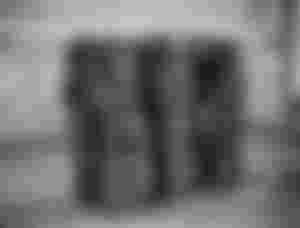Casting of pillow bearing housing
Tools and equipments:
Moulding bench
Moulding flask
Cope - the upper half of the moulding flask
Drag- the lower house of the moulding flask
Moulding board
Rammer
Sprue pin
Riser pin
Heart and square
Moulding sand

Theory
casting simply means the pouring of molten metal into a prepared mould. The mould has a desired casting cavity which is the shape of the object.

Casting process
Sand casting process
Die casting process
Sand casting process
In this process, the mould material is made of sand.
Advantages
1. It is cheaper
It is used to make any type of metal products.
It is used for large surface casting.
Limitations
Sand casting delivers rougher surface finish.
It is not as fast as other casting processes.
Die casting process
in this process, the mould material is metal, it is also called a permanent mould casting.
Advantages
Suitable for mass production
It is faster
It makes work accurate.
Definition is always smooth.
Limitations
The mould metal must have a higher melting point than the molten metal e.g steel die mode would have to be used to produce aluminium products. If the same metal material is used,the mould might melt with the molten metal.
Ferrous metal can't be done with die casting.
Cost of die casting mould is expensive.
It is not economical to use die casting for many works.


Procedures
The following procedures were considered in the making of pillow bearing house;
You prepared the green sand first. this was done by spraying little water on the sand heap at interval while we turned the sand over thoroughly.
We rubbed the sand between our palms for even distribution of the moisture.
After we were done rubbing the damp sand, we seived the sand and separated the lumps from the fine green sand.
The flat side of the solid pattern was placed on the surface board.
The drag was placed on the board with the pattern at the middle.
We sprinkled separating powder on the pattern.
After that, you filled the drug with sand and compacted it evenly with the rammer.
We leveled the sound with the help of the straight edge.
we turned the drag over and fixed the cope to it with the help of the guide pin.
Separating powder was sprinkled on the pattern.
Separating sand was also sprinkled on the compacted sand in the drag.
The sprue and rise pin were placed few centimetres to the partner.
We filled the cope with sand and compact the sand evenly.
The sand in the cope was leveled and vent pin was used to create holes randomly on the mould to serve as escape route for trapped gas during pouring.
A pouring cup was created beside the sprue pin.
Gently, the sprue pin and riser pin were removed also, we lifted the cope from the drag gently.
The channel (runner) was created from the sprue and riser exit to the cavity.
We blew out the loose sand from the cavity and removed and sharp corners.
The metal scrap was charged into the furnace and allowed to melt.
After the molten metal had solidified, the mould was broken and removed the cast.
We carried out fetting by cutting away the unwanted parts.
Different section of the foundry workshop
Pattern: the pattern is a replica of what is to be produced it is made up of wood, wood products, plastic, pop and wax, the above mentioned are the commons ones.
Types of pattern
1. Solid
Split
Multi split
Moulding: we compact sand rigidly around the pattern.
A. Floor moulding
B. Bench moulding
C. Pit moulding
D. Machine moulding
Green sand: green sand denotes the presence of moisture in moulding sand i.e when a sand is damp or wet.
Melting and pouring: this is done by the use of melting furnaces
Fetting: simply means the cutting away of unwanted part from casting
Safety precautions in foundry workshop
Always with the approved safety workshop wears.
Never wear rings or wrist watches in the workshop.
Never use bare hands to bring out molten metal from the furnace.
Do not use your bare hands to rub damp sand.
Read, enjoy and learn🤗😊❤️






It was nice reading this at least I learnt something new